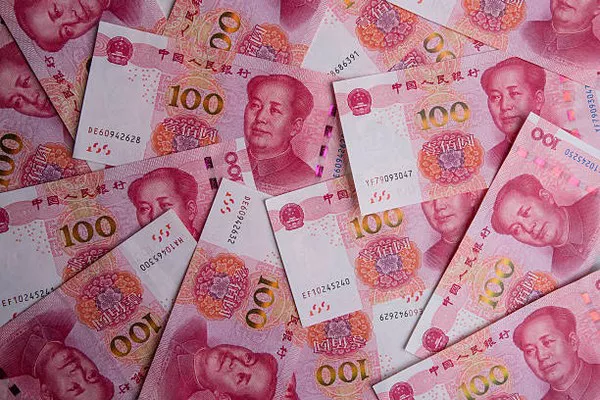China, once hailed as the powerhouse of global economic growth, is now experiencing a slowdown that reverberates across the world. This deceleration, while not unexpected given China’s economic maturity, has significant implications for global trade, investment, and economic stability. Understanding the drivers behind China’s economic slowdown is crucial for policymakers, businesses, and investors alike. In this article, we delve into the factors contributing to China’s economic deceleration and explore its implications.
Structural Shifts in China’s Economy
China’s economic slowdown is not merely a temporary blip but rather reflects deep-seated structural shifts within its economy. These shifts are characterized by several key factors.
1. Transition to a Consumption-Driven Economy
China has long been dependent on exports and investment-led growth. However, as the economy matures, there’s a concerted effort to rebalance towards domestic consumption as the primary driver of economic growth. This transition is vital for ensuring sustainable and inclusive growth in the long term.
Aging Population Dynamics
One significant challenge to consumption-driven growth is China’s aging population. With a rapidly aging demographic, there are concerns about declining labor force participation and increased pressure on social welfare systems. This demographic shift dampens consumption growth as older populations tend to save more and spend less.
Income Inequality
Moreover, income inequality remains a persistent issue in China. While urban centers have experienced significant prosperity, rural areas lag behind, creating disparities in consumption patterns. Bridging this urban-rural divide is essential for unlocking the full potential of domestic consumption.
Trade Tensions and External Headwinds
China’s economic slowdown is exacerbated by escalating trade tensions with the United States and other trading partners. The trade war initiated by the Trump administration and continued geopolitical uncertainties have disrupted global supply chains and dampened investor confidence.
Impact on Export-Led Growth
As one of the world’s largest exporters, China’s economy is highly sensitive to changes in global demand. Tariffs imposed by the United States and retaliatory measures by China have led to a decline in export volumes, particularly in sectors like manufacturing and technology.
Supply Chain Disruptions
The COVID-19 pandemic further exposed vulnerabilities in global supply chains, prompting many businesses to reconsider their reliance on China as a manufacturing hub. This trend, coupled with rising labor costs and regulatory challenges, has led to a gradual shift of production facilities to other countries, impacting China’s export competitiveness.
Debt Overhang and Financial Risks
Another key factor contributing to China’s economic slowdown is the mounting debt burden and financial risks within the economy. In the aftermath of the global financial crisis, China implemented a massive stimulus package to spur growth, leading to a surge in corporate and local government debt.
Debt-Fueled Investment
While this stimulus helped cushion the economy during the crisis, it also fueled excessive investment in infrastructure and real estate, leading to overcapacity and inefficient allocation of resources. The ongoing challenge is to deleverage the economy without triggering a sharp slowdown or financial instability.
Shadow Banking and Regulatory Challenges
China’s financial system is also grappling with the proliferation of shadow banking activities and regulatory loopholes. These shadow banking practices, including off-balance-sheet lending and wealth management products, pose systemic risks and complicate efforts to rein in debt levels effectively.
FAQs
Q1: How does China’s economic slowdown impact global markets?
A1: China’s economic slowdown has ripple effects across global markets. As a major consumer and producer of goods, any deceleration in China’s economy dampens global demand and affects commodity prices, supply chains, and investor sentiment.
Q2: What steps is the Chinese government taking to address the economic slowdown?
A2: The Chinese government has implemented various measures to mitigate the economic slowdown, including fiscal stimulus packages, monetary easing, structural reforms to boost domestic consumption, and efforts to deleverage the economy and strengthen financial regulation.
Q3: How might China’s economic slowdown affect other emerging markets?
A3: China’s economic slowdown can have mixed effects on other emerging markets. While reduced demand for commodities and capital outflows may negatively impact commodity-exporting and debt-laden countries, some emerging markets may benefit from China’s shift towards higher-value-added production and investment in infrastructure projects through initiatives like the Belt and Road Initiative.
SEE ALSO Why Is China’S Currency Getting Weaker? A Comprehensive Analysis
Conclusion
In conclusion, China’s economic slowdown is a multifaceted phenomenon driven by structural shifts, external headwinds, and domestic challenges. While the transition to a consumption-driven economy holds promise for long-term sustainability, policymakers must navigate complex issues such as demographic change, trade tensions, and financial risks. For businesses and investors, understanding these dynamics is essential for adapting strategies and mitigating risks in an evolving economic landscape.


